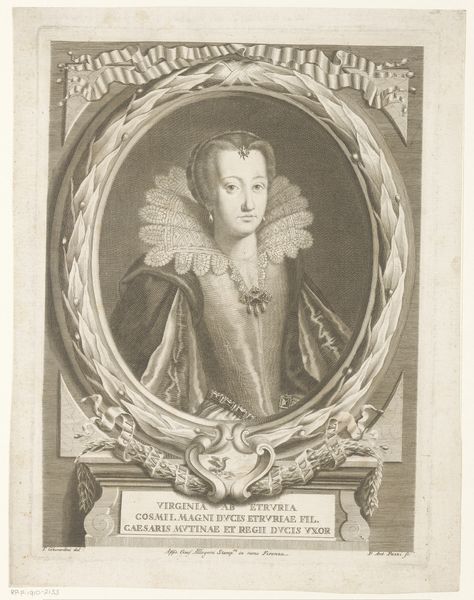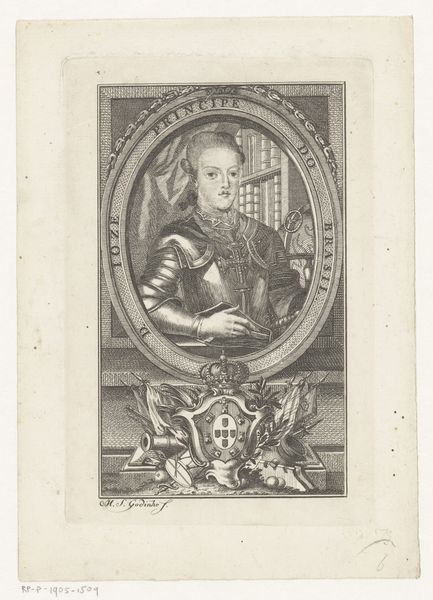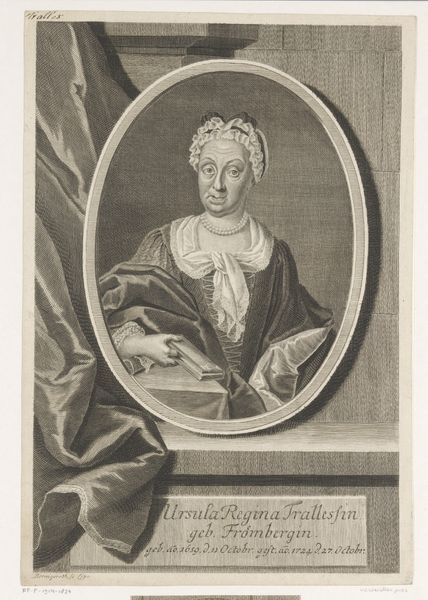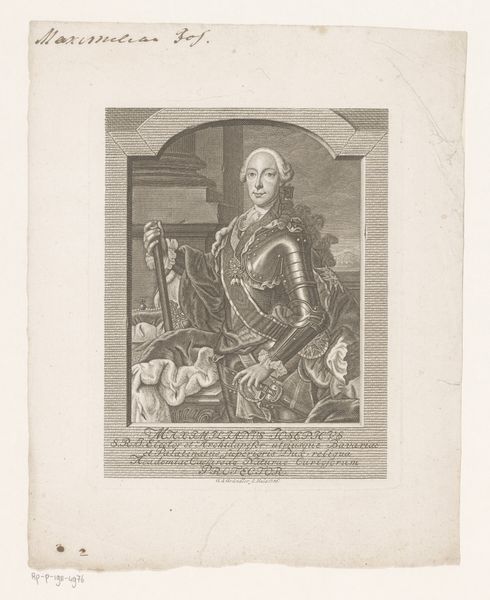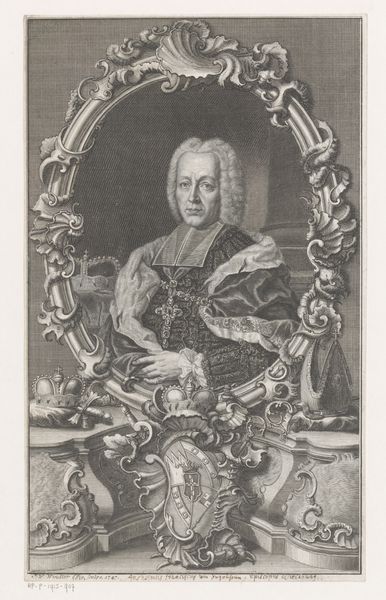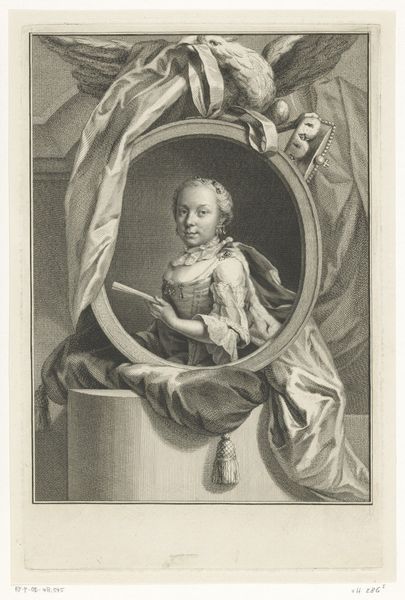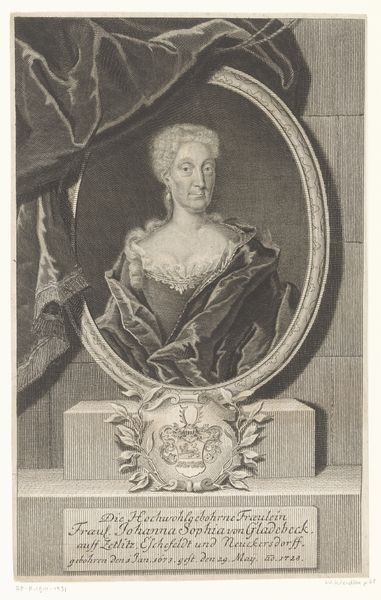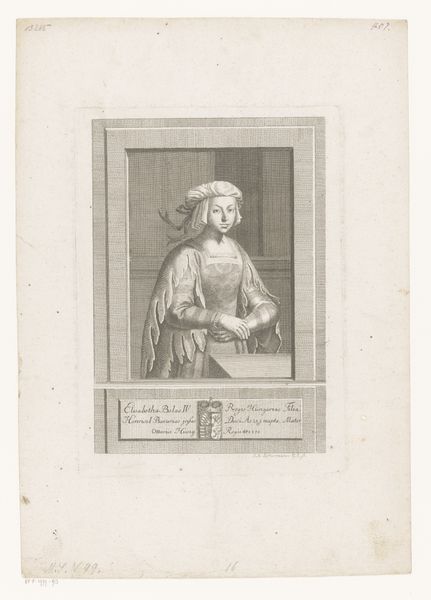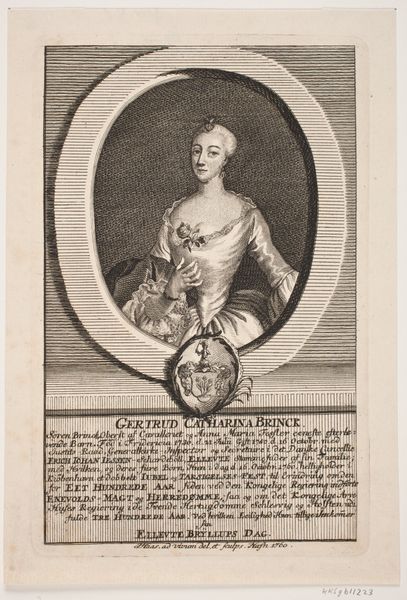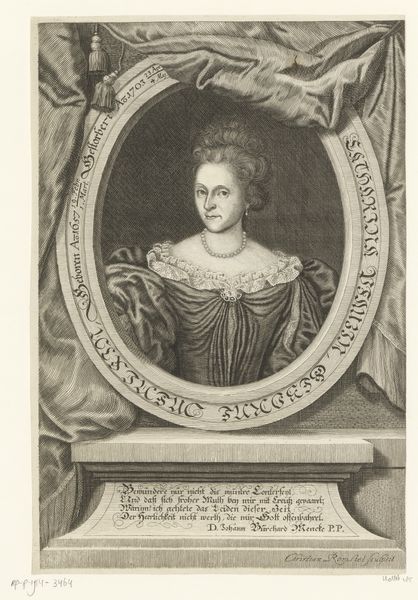
Dimensions: height 215 mm, width 157 mm, height 33 mm, width 160 mm
Copyright: Rijks Museum: Open Domain
Editor: This is "Portret van Jacob Thomas Jozef Wellens," made sometime between 1760 and 1835 by Andreas Bernardus de Quertenmont. It's an engraving, and I'm struck by how formal it feels. The oval frame, the coat of arms... it all seems to be about projecting a very specific image. What do you see in this portrait? Curator: I see a deliberate construction of identity. Look at the symbols employed: the draped fabric suggesting power, the coat of arms anchoring him to lineage and place. The engraving medium itself speaks to a desire for wide dissemination, to cement his image in the cultural memory. What emotions do you perceive in his gaze? Editor: He looks… impassive? Almost like he's daring you to challenge his status. Curator: Precisely. The artist is less interested in capturing raw emotion than in conveying established social standing. The frame almost acts as a reliquary, presenting Wellens as an object of veneration, carefully positioned within the visual language of the time. Note how the inscription elevates him through learned language and association with his city. It serves as a legend solidifying his significance. Can you think of a modern parallel in portraiture? Editor: Maybe a politician's official photograph? Something carefully staged to convey competence and authority? Curator: A fitting comparison. Images hold immense power. By studying the historical context, we unlock a richer understanding of its psychological weight and intended message. The cultural memory imbued within is undeniable. Editor: This has completely changed my perception of the piece. I had viewed it simply as a historical portrait, but now I see the active role it plays in constructing and preserving memory. Curator: Indeed, a single image is a palimpsest etched with cultural intention, ready to be deciphered and understood.
Comments
No comments
Be the first to comment and join the conversation on the ultimate creative platform.
